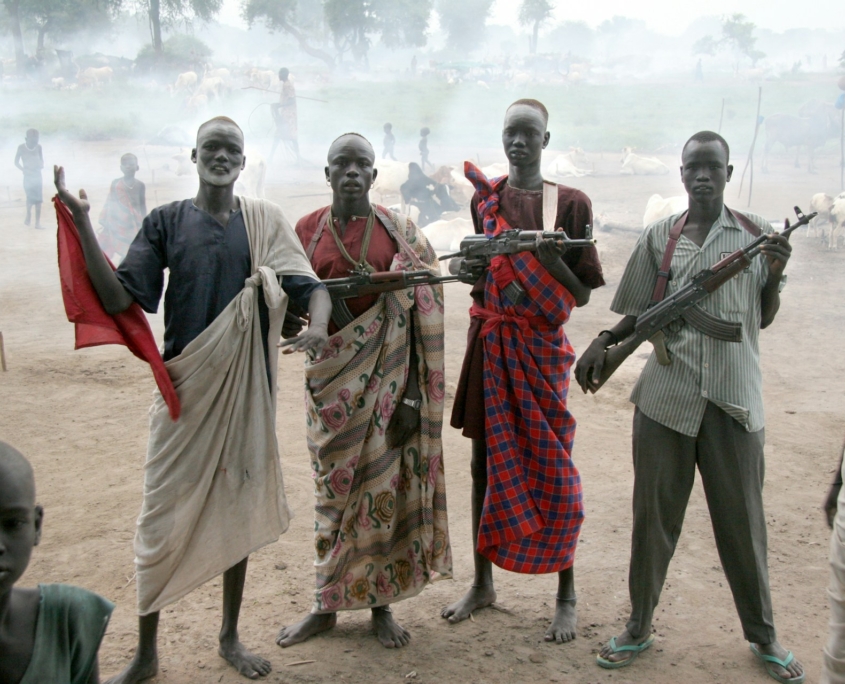 Since the Sudan conflict began in April 2023, an estimated 13,752 lives have been lost, more than 8 million people have been displaced and 24.8 million people, half of Sudan’s population, need humanitarian assistance. Amid the challenges faced by international aid, Emergency Response Rooms (ERR) and localized, community-based aid groups, have emerged as a crucial force supporting victims of the conflict.
Since the Sudan conflict began in April 2023, an estimated 13,752 lives have been lost, more than 8 million people have been displaced and 24.8 million people, half of Sudan’s population, need humanitarian assistance. Amid the challenges faced by international aid, Emergency Response Rooms (ERR) and localized, community-based aid groups, have emerged as a crucial force supporting victims of the conflict.
Roots of the Conflict
Sudanese journalist Nesrine Malik attributes the April 2023 conflict to the 2003 Darfur genocide. The then-president Omar al-Bashir deployed the Janjaweed militia, later formalized into the Rapid Support Forces (RSF), resulting in the loss of approximately 300,000 lives in the Darfur region as they suppressed a burgeoning rebellion.
In 2019, a successful revolution and military coup brought an end to al-Bashir’s 30-year rule. However, the subsequent power-sharing agreement between the Sudanese Army (SAF) and the RSF only intensified and fueled the flames of the current war, as leaders from both sides vied for dominance and control.
Impact on Civilian Lives
As of October 2023, 5 million people face emergency-level food insecurity. In Bahri City, 38 soup kitchens that supported 200,000 people can no longer source or distribute food due to energy blackouts. Subsequently, a warning from a February 2024 Clingendael report suggests a potential worst-case scenario where famine could claim the lives of 1 million people.
Furthermore, with approximately 30 million people deprived of health care, vulnerability to diseases such as malaria, measles, dengue and cholera has escalated significantly. Widespread human rights violations persist, as a December 2023 United Nations (U.N.) report reveals that RSF members allegedly perpetrated 118 cases of sexual violence, including 19 involving children.
Impact on Aid
Once in Sudan, bureaucratic hurdles often prevent aid from reaching those in need. The U.N. refers to difficulties government authorities place on aid groups, including obtaining visas, transporting aid and importing supplies. In December, fighting engulfed a humanitarian hub in Gezira state, displacing the 800,000 people it supported.
In fact, only 40,000 of those displaced have received aid as 70 World Food Programme (WFP) trucks were stuck in Port Sudan for two weeks in January, awaiting clearance. Both sides in the conflict are weaponizing international aid. The leader of the SAF has expressed intentions to obstruct aid to RSF-controlled regions and prohibit cross-border humanitarian assistance from neighboring states. Meanwhile, the RSF has imposed telecom blackouts which have hindered the delivery of essential supplies.
Additionally, armed fighters have reportedly looted aid trucks and warehouses, exacerbating the challenges in providing critical support to those in need. Constant threat looms over individuals providing life-saving aid. The Aid Worker Security Database reported the deaths of 25 aid workers in 2023. Since April of that year, the World Health Organization (WHO) has registered 60 attacks on health workers.
Emergency Response Rooms and Localised Aid Efforts
The urgency of aid is clear but the response remains insufficient. The U.N. has appealed $2.6 billion to address the crisis, yet it has only secured 3.59% of this amount. The number of national NGOs, international NGOs and U.N. Agencies had dropped from 174 to 85, three months into the conflict. Recognizing this shortfall, highly localized and volunteer-driven efforts of Emergency Response Rooms (ERR) are filling the gap.
The ERRs ensure the availability of fundamental services by assessing local needs and mobilizing volunteers to address them. ERRs have a diverse range of responsibilities, including providing daily meals, assisting pregnant women and individuals with chronic diseases, coordinating with local electricians to repair damaged power lines, facilitating the return of medical staff to hospitals, sourcing fuel for ambulances and disseminating information about safe passages or reported conflict areas.
In addition, the impactful work of ERRs has reached more than 4 million civilians and evacuated 12,000 people. These organizations prioritize transparency in their operations, adopt a decentralized and horizontal organizational structure and adhere to democratic decision-making processes. These principles are aimed at delivering a person-centered response working to prevent Sudan from total collapse.
Challenges Confronting Emergency Response Rooms
The ERRs face challenges of being overstretched, underfunded and lacking resources. The Sudan Crisis Coordination Unit emphasizes a prevailing mentality that sees the local response as “not integral to the international humanitarian response.”
Supporting community-led responses saves lives and directly contributes to shaping a more representative and responsive Sudan that meets its citizens’ needs. The head of USAID has recognized the efforts of ERRs and expressed intentions to shift from a model dependent on the U.N. to one that acknowledges the role of community-based groups.
Strengthening the Emergency Response Rooms
A report from Shabaka in January 2024 offers guidelines for aiding Emergency Response Rooms (ERRs). It emphasizes several crucial aspects: providing ERRs with ample, adaptable funding for necessary staff, supplies and medicines; enhancing communication and coordination among ERRs, medical facilities and humanitarian groups.
Moreover, establishing security measures to shield ERRs from conflict, harassment and intervention; upholding medical neutrality and humanitarian principles to keep ERRs open to all in need; and endorsing training and capacity building for ERR staff in trauma care, infection prevention, mental health and psychosocial support.
Moreover, the Sudanese people show remarkable resilience in the face of war. However, there is a need for the international community to actively recognize and support the model that ERRs offer for humanitarian work, to bolster aid efforts in the country.
– Ben Miley-Smith
Photo: Unsplash
The post Emergency Response Rooms and Local Response in Sudan appeared first on The Borgen Project.

